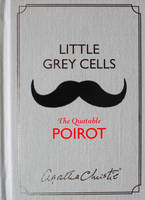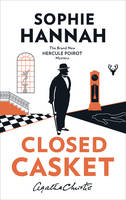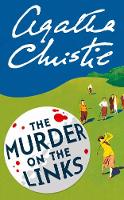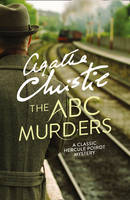October 2020 will mark one hundred years since the very first appearance of ‘the greatest detective in the world', (his words incidentally — accurate though): Agatha Christie's Hercule Poirot.
The only fictional character to ever have an obituary (on the front page no less) of the New York Times, Poirot appeared in thirty-three novels and fifty short stories from 1920 to 1975. His first appearance ever in The Mysterious Affair at Styles (October 1920), is a wonderful introduction to the brilliant, fussy Belgian detective we have all come to know and love:
"He was hardly more than five feet four inches but carried himself with great dignity. His head was exactly the shape of an egg, and he always perched it a little on one side…The neatness of his attire was almost incredible; I believe a speck of dust would have caused him more pain than a bullet wound." - The Mysterious Affair at Styles.
The Mysterious Affair at Styles
The immaculate Poirot is of course as famous for his detecting methods, as he is for his glorious moustache. Perhaps this moustache is best captured by Poirot's advise to Captain Hastings in 'Peril at End House:
“If you must have a moustache, let it be a real moustache – a thing of beauty such as mine.”
Order, method and symmetry are of the utmost importance to the detective, to the point where he finds it: "really unsupportable that every hen lays an egg of a different size! What symmetry can there be on the breakfast table?."
And we can't be forgetting those famous little grey cells of his, which: "if they are not exercised, they grow the rust."
Poirot's favourite case? Christie shared in a 1938 Daily Mail article that The Murder of Roger Ackroyd was certainly up there:
"he was at his best, investigating a crime in a quiet country village and using his knowledge of human nature to get at the truth."
'The Murder Of Roger Ackroyd' was also voted best crime novel of all time by the British Crime Writers Association in 2013, and I'd have to agree it is one of her best (though I've still yet to some across an Agatha Christie mystery I've been able to solve!)
Poirot has been played by a wide range of actors including Albert Finney, Peter Ustinov, Tony Randall, Orson Welles, Kenneth Branagh, and John Malkovich, but none have portrayed him quite so brilliantly as David Suchet in the classic series Agatha Christie's Poirot. Suchet captured the appearance, mannerisms - and all-important moustache - of Hercule Poirot for 14 years and 70 episodes, beginning with 'The Mysterious Affair at Styles' in 1989, and concluding with Curtain, Poirot's Last Case in 2013.
Christie often said that Belgian refugees seeking refuge in Britain during the First World War, were her inspiration for the character of Poirot:
"We had quite a colony of Belgian refugees living in the parish of Tor. Why not make my detective a Belgian? I thought. There were all types of refugees. How about a refugee police officer? A retired police officer." -
Christie's whodunnits were also influenced by the great mystery writers before her including Arthur Conan Doyle (who, incidentally, gave a spirit medium one of Christie's gloves upon her mysterious disappearance in 1926):
"I was still writing in the Sherlock Holmes tradition – eccentric detective, stooge assistant, with a Lestrade-type Scotland Yard detective, Inspector Japp." (Agatha Christie).
However, Christie also had a style all of her own, with unforgettable characterisations, creative storylines, and truly brilliant reveals. She still holds the record for the most translated author in history, and the best selling fiction writer of all time with over two billion books sold.
Born in 1890, the queen of crime came from an upper middle class family and was mostly home schooled. Aged 24, she married military officer Archibald Christie and spent the war years working in hospital dispensaries, building her tremendous knowledge of poisons that would feature so greatly in her novels. Her second marriage to archaeologist Max Mallowan saw her spend several months on digs' in the Middle East, where again she would come to set stories including the Poirot novel Murder in Mesopatamia'.
Her own life was not without mystery, with Christie famously disappearing for 11 days in 1926. After days of searching and speculation from the public, crime writers (including Dorothy L Sayers) and police alike, Christie was discovered at a hotel in Harrogate where she had been staying under an assumed name. While the 'mystery' has never really been solved, biographer Andrew Norman believes Christie was going through out of body amnesia, a state triggered by the recent loss of her mother, and the discovery of her husband Archibald Christie's infidelity.
130 years since the birth of Agatha Christie, and 100 years since our very first meeting with Hercule Poirot, it is clear we still can't get enough of Christie and her beloved detective, with reprints, ongoing movies, new novels by Sophie Hannah, and much more in the last decade alone. Despite Christie's frequently expressed regret that she ever created this "detestable, bombastic, tiresome, egocentric little creep", he is loved the world over for his brilliant grey cells, endearing oddities, and (often disguised) kindness. In quieter moments, it seems he even won over his frustrated creator:
" a reluctant affection has sprung up for him. He has become more human, less irritating. I admire certain things about him - his passion for the truth, his understanding of human frailty, and his kindliness. And he has taught me something - to take more interest in my own characters; to see them more as real people and less as pawns in a game." - Agatha Christie, 1938.









Add a comment to: Hercule Poirot – Celebrating 100 years